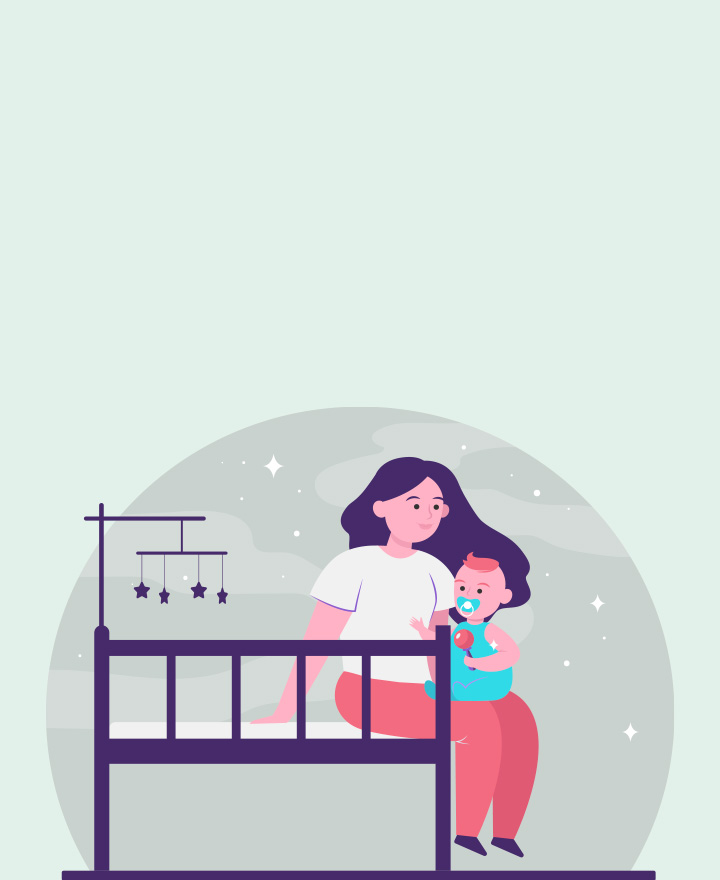

Squint Eye in Babies: Causes, Signs and Treatment
Squint eyes are usually noticed in young kids, and this happens when the eyes are misaligned, leading to both eyes pointing in different directions. Medically known as strabismus, this condition can be treated when it is diagnosed early on. While strabismus's exact causes are unknown, genetic and refractive issues are the major triggers for squint eyes in children. Read on to learn more about what causes squint eyes in babies & treatment options available.
Common Triggers for Squint Eyes in Babies
Before we know the causes of squint eyes in babies, let's understand more about this condition and the common squint problems that babies may experience.
Some of the tilting movements noticed in the eyes in this condition are:
• Esotropia –
Common type of eye imbalance in babies with this condition; eyes are tilted inward
• Exotropia –
Eyes are tilted outward
• Hypertropia –
Eyes are tilted upward
• Hypotropia –
Eyes are tilted downward
In all squinted eye conditions, one eye is the active eye, and the other is the lazy eye, or amblyopia. If symptoms are left undiagnosed and untreated for a long time, the brain disregards the images formed by the lazy eye, thereby creating permanent damage to the baby’s vision.
Warning Signs of Squint Eyes in Babies and Children
Look out for these symptoms in your newborns to diagnose strabismus early and get it treated on time.
• Both eyes looking in different directions, with one eye tilted upward, downward, inward, or outward
• Babies moving their eyes in different directions when they are about three months old
• Non-alignment of eyes, and babies find it difficult to move their eyes in the same direction
• Turning off their eyes or looking tired when they focus on seeing something for a long time
Causes
The main causes of squint eyes in babies can be classified under the following categories:
• Squint caused due to congenital issues
This is a condition in which babies are born with squint eyes, but the exact causes are not known. Babies start to show symptoms like misalignment of eyes by the time they turn six months old. In some cases, babies with this condition may have a family member with squint eyes.
• Squint caused due to refractive errors
The refractive causes of squint eyes in babies include three types: myopia (short-sightedness), hypermetropia (long-sightedness), and astigmatism (vision distortion due to improper curving of the eye). This condition is most common in children aged two and above, and it can make it difficult for kids to focus on something for a long time.
• Squint due to other causes
Some babies may develop squint eyes when they have cognitive developmental issues in the brain. These can include conditions like Down’s syndrome, cerebral palsy, Noonan’s syndrome, brain tumour, a rare eye cancer (medically known as retinoblastoma), injuries to the brain, hydrocephalus (accumulation of cerebrospinal fluid), cranial nerve lesions, infections like measles and more.
Health risks associated with Squint Eyes
It takes quite a few years for babies to see things clearly. In their first few years, their visual pathway is only about 12 to 15cm long. While you may not be able to accurately diagnose the vision of babies, you can identify squint eyes in them by keenly observing the direction and alignment of their eyes. Noticing these signs early is important because if left untreated for a long time, the vision from the misaligned eye is not picked by the brain, leading to several health risks like the following:
• Amblyopia
Commonly known as the lazy eye, this condition irreversibly damages the visual pathways. There is no treatment for it. Doctors recommend treating it by the time kids turn seven years old, as the damage could be permanent if diagnosed beyond this stage.
• Reduced self-esteem
A squint eye can considerably change one’s physical looks. Kids may feel conscious about this cosmetic defect and suffer from poor self-esteem and stress when facing the outside world.
Treatment of Squint Eyes
Squint eyes in babies should be diagnosed early if you are looking for a solution for this problem. Treatment for strabismus includes the following:
• Eyeglasses –
If the condition is caused due to myopia or hypermetropia, eyeglasses can correct the squint issue in kids.
• Vision Therapy –
Exercises to improve the coordination between the brain and eyes
• Eye Patches –
Wearing eye patches on the correct eye for many hours at a stretch to let the kids see with the misaligned eye and strengthen its muscles
• Surgery –
If none of the above methods work, doctors may recommend eye muscle surgery for kids
Conclusion
When your baby turns six months old, they start exhibiting squint-eye symptoms (if any) like misalignment of eyes, eyes tilting in different directions, etc. Consult a paediatrician as soon as you see these signs. If the signs are not detected early on, squint eyes can cause irreversible damage to your child’s visual pathways.
One of the important components of our overall wellness is also being financially secured. Healthcare emergencies can happen any time, but a good health insurance policy can protect you from such uncertain situations. To know more about Wellness and other health related tips, visit the wellness corner.
Disclaimer: This blog provides general information and discussions about health and related subjects. The information and other content provided in this blog, website or any linked materials are not intended and should not be considered or used as a substitute for medical advice, diagnosis or treatment. Kindly contact your doctor before starting a new medicine or health regime.
Related Articles
Common Birth Defects that Can Occur in Babies
What happens if a baby gets malaria?
Common Tooth Problems in Babies and Their Effective Solutions
Published on June 18, 2025















 Health Insurance
Health Insurance  Travel Insurance
Travel Insurance  Car Insurance
Car Insurance  Cyber Insurance
Cyber Insurance  Critical Illness Insurance
Critical Illness Insurance
 Pet Insurance
Pet Insurance
 Bike/Two Wheeler Insurance
Bike/Two Wheeler Insurance  Home Insurance
Home Insurance  Third Party Vehicle Ins.
Third Party Vehicle Ins.  Tractor Insurance
Tractor Insurance  Goods Carrying Vehicle Ins.
Goods Carrying Vehicle Ins.  Passenger Carrying Vehicle Ins.
Passenger Carrying Vehicle Ins.  Compulsory Personal Accident Insurance
Compulsory Personal Accident Insurance  Travel Insurance
Travel Insurance  Rural
Rural